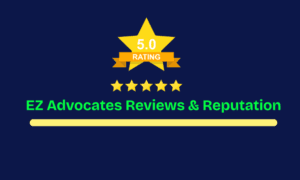A logo is the face of a company and plays a crucial role in brand recognition and perception. Over time, businesses may need to consult the help of a logo maker to stay relevant, reflect changes in their offerings, or adapt to evolving design trends. However, updating a company logo can be a delicate process that requires careful planning and execution. Let’s dive in and explore how to update your company logo smartly, ensuring a successful transition while maintaining brand consistency and customer loyalty.
Evaluate the Need for an Update
Before diving into the logo redesign process, evaluate the need for an update. Consider the reasons behind the change: Is it to modernize the brand? Does the current logo no longer align with your company’s values or target audience?
Assess customer feedback and market trends to gain insights into how your current logo is perceived. This evaluation will help you determine whether a full logo redesign or a subtle refresh is required.
Retain Core Elements
When updating your logo, it’s important to retain core elements that contribute to your brand’s identity and recognition. Identify the key components of your current logo that resonate with your audience and differentiate your brand. These could include specific colors, typography, or visual symbols. By preserving these elements, you ensure a seamless transition and maintain the brand equity you have built over time.
Research Design Trends
While staying true to your brand identity, staying current with design trends is essential. Research the latest logo design trends within your industry and broader design landscape. However, tread cautiously and avoid blindly following trends that may quickly become outdated. Incorporate design elements that align with your brand values and long-term vision while appealing to your target audience.
Seek Professional Design Assistance
Updating a company logo is not a task to be taken lightly. Enlist the help of professional logo designers or design agencies experienced in branding and logo design. They have the expertise to interpret your brand’s essence and translate it into a visually compelling and impactful logo. Collaborating with professionals ensures a high-quality result that meets your brand’s objectives.
Test and Refine
Once you have initial logo concepts, conduct thorough testing and gather feedback from various stakeholders. Share the new logo designs with employees, trusted customers, and focus groups to gauge their reactions and gather insights. Consider conducting surveys or interviews to understand better how the new logo is perceived and whether it effectively represents your brand. Use this feedback to refine the design further and ensure it resonates with your target audience.
Plan a Thoughtful Rollout
A successful logo update requires a well-planned rollout strategy. Develop a comprehensive communication plan that informs your employees, customers, and stakeholders about the upcoming change.
Explain the reasons behind the logo update, the design process, and the goals you aim to achieve with the new logo. Leverage various communication channels such as social media, newsletters, and press releases to create anticipation and generate excitement around the new logo. Consider organizing launch events or collaborations to further amplify the logo update’s impact.
Update Brand Collateral Consistently
To ensure a cohesive brand experience, update all brand collateral consistently with the new logo. This includes your website, business cards, signage, packaging, and other materials featuring your logo. Pay attention to typography, color schemes, and design elements to align them with the updated logo. Consistency across all touchpoints will reinforce the new logo and avoid customer confusion.
Monitor and Adapt
Monitoring and adapting is essential when updating a logo smartly because they ensure the logo’s effectiveness and alignment with the brand’s objectives. By monitoring the logo’s performance, you can gather feedback from customers and stakeholders, helping you understand how it is perceived and whether it resonates with the target audience. This feedback allows for necessary adaptations, ensuring the logo remains relevant and impactful.
Adapting the logo based on monitoring insights helps to address any weaknesses or areas for improvement, resulting in a more refined and customer-centric design. Through continuous monitoring and adaptation, the logo can evolve alongside market trends and changing customer preferences, maintaining its relevance and enhancing brand perception.
Careful Planning and Execution
Updating your company logo is a significant undertaking that requires careful planning and execution. By evaluating the need for an update, researching design trends, seeking professional design assistance, and monitoring and adapting, you can successfully update your logo while maintaining brand consistency and customer loyalty.
Remember, a smart logo update should align with your brand’s values, resonate with your target audience, and reflect the evolution of your business. With a strategic approach, your updated logo can breathe new life into your brand and propel it forward in a competitive market.



































